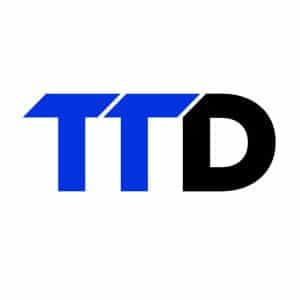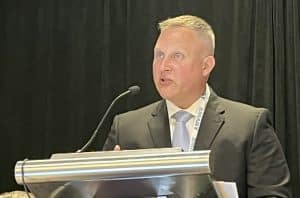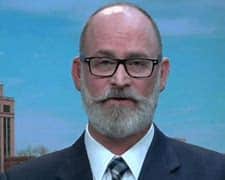The following letter was submitted by the Transportation Trades Department of the AFL-CIO, on behalf of SMART, SMART Transportation Division and a number of other labor unions to the U.S. Department of Transportation and to the National Highway Traffic Safety Administration.
November 8, 2023
Dear Secretary Buttigieg and Acting Administrator Carlson,
We write today to reiterate our grave safety concerns about the expanded testing and operation of automated driving system (ADS)-equipped vehicles. Given the recent surge in both the number of cities operating these vehicles on public streets and the number of crashes and safety incidents involving these vehicles, we urge you to take immediate action to bring long overdue federal leadership to this issue. We applaud the National Highway Traffic Safety Administration’s (NHTSA) recent decision to launch an investigation into pedestrian protection practices at General Motors’ Cruise autonomous vehicle division. But we believe that the U.S. Department of Transportation (DOT) must take additional actions to end the unsafe operation of ADS-equipped vehicles on our roads.
As robotaxi and other ADS-equipped projects have expanded, workers have faced increasing safety threats on the job. Firefighters and police have been forced to jump out of the path of driverless taxis moving through emergency cordons. Bikeshare workers have been forced to dodge these vehicles abruptly stopping in bike lanes and crosswalks. Transit and sanitation workers have been boxed in, cut off, and trapped inside their vehicles by driverless cars driving erratically. Construction and maintenance workers, who stand in harm’s way every day on our roads, have seen driverless vehicles pull into construction sites. These safety issues are exacerbated by operational chaos as driverless cars are failing to use public roads in safe, predictable ways.
Let us be clear: ADS-equipped vehicle operations are unsafe and untenable in their current form. This industry is in dire need of federal regulation and leadership to restore a modicum of safety and establish a realistic path for these vehicles to operate without threatening other road users – including those represented by these unions. The DOT and NHTSA should immediately take the following actions – consistent with NHTSA’s mission statement to save lives and prevent injuries through safety standards and enforcement – to restore confidence in the safety of public roadways everywhere:
- Issue an updated department-wide Automated Vehicle Policy (AV 5.0) which sets firm expectations for these vehicles and aligns with the Department’s Innovation Principles;
- Open investigations into Waymo, Zoox, and other operators of for-hire driverless vehicles similar to the already-announced Cruise investigation; and,
- Update NHTSA’s Standing General Order on Crash Reporting for incidents involving ADS to include a broader range of performance indicators such as driving into construction worksites, violations of police and firefighter cordons, pulling into bicycle lanes or pedestrian crossings, near collisions, and other clear safety issues which may not result in crashes.
Background
While Phoenix was the first city to open its doors to for-hire services provided by driverless cars in 2017, California threw the floodgates wide open in June 2021. The California Public Utilities Commission (CPUC), which regulated commercial licenses in the state, began granting licenses to private companies to operate driverless ADS-equipped vehicles within the city limits of San Francisco. Both cities have seen the fleet of driverless vehicles increase exponentially since then, despite the objections of transportation and planning agencies, police and firefighters, and concerned citizens. The California licenses were expanded in early 2023 to allow Cruise and Waymo to operate for-profit driverless taxi services 24 hours a day across the entirety of San Francisco. The results have been chaotic and dangerous. There have been crashes, injuries, traffic jams, posed hazards to sanitation workers, emergency services delayed, law enforcement confusion, blocking access to crime scenes, recalls, and even the death of a pet.
Following a tragic crash in early October of this year where a Cruise robotaxi dragged a pedestrian 20 feet before coming to a stop, the California Department of Motor Vehicles (DMV), which regulates motor vehicle safety in the state – having already halved the number of vehicles Cruise could have on the road at any one time following a collision between one of their vehicles and a firetruck – suspended the company’s license entirely. The DMV’s investigation not only found that Cruise’s vehicles failed to meet minimum standards for safe operations, but that the company had also intentionally withheld vital information from regulators. After this damning verdict from the DMV, Cruise voluntarily shut down its driverless operations in other states and today issued a software recall for all of its 950 driverless vehicles.
While Cruise is not currently operating any vehicles without human operators, Waymo, Zoox, and other robotaxi operators continue to use public roads as test sites for driverless vehicles. Many cities, including San Francisco, Phoenix, Austin, Los Angeles, Las Vegas, Seattle, Washington, DC and its suburbs, still have driverless cars operating today. The federal government has provided very little oversight of any of these companies and the result has been a disaster for the residents of these cities. That fact was recently echoed by Los Angeles Mayor Bass in a letter to the CPUC, which states, “To date, local jurisdictions like Los Angeles have had little to no input in AV deployment and are already seeing significant harm and disruption.”[1]
The ongoing problems created by these vehicles (a sampling of which is included as an appendix to this letter) offer a stunning glimpse into the challenges that are inherent both to ADS technology and the real-time testing of ADS technology on our streets without rigorous federal oversight. Moreover, it has offered a preview of what may happen if other states adopt the same approach to driverless ADS-equipped vehicle operations without federal or local safeguards in place. The California example and NHTSA’s recent investigation into Cruise show that it is time for the DOT to step up its regulatory authority to ensure these vehicles are being operated responsibly and with the serious oversight they require.
Update Department Wide Automated Vehicle Policy at DOT
Transportation unions have repeatedly called on the DOT to take proactive steps to regulate the safety of ADS vehicle operations through direct correspondences and regulatory filings.[2] Most recently, the International Brotherhood of Teamsters released their “Autonomous Vehicle Federal Policy Principles”, calling for comprehensive federal action. In response to the DOT’s latest request for comments on the topic, the Transportation Trades Department, AFL-CIO (TTD), and the Transport Workers Union of America (TWU) called on the DOT to reject the Trump Administration’s hands-off approach to regulating automated vehicles (AVs), and develop a safety-focused approach that ensures the well-being of road users and the larger transportation system. As noted in TTD’s regulatory filing:
“Any framework for automated vehicles must lay the groundwork for true regulatory oversight. The [Framework for Automated Driving System Safety] entirely fails to meet this standard; instead it turns over the authority to regulate to the industry itself… In the absence of federal leadership, automated vehicles are operating across the country with very little oversight. The approach is not based on safety; it is based on deregulation and corporate interests.”
Sadly, we are now seeing first-hand the catastrophic results of a failure to take these threats seriously. It is past time that the DOT recognized the deep shortcomings of the current departmental AV policies, and that they develop an updated, comprehensive, safety-focused framework for ADS. That framework must offer clear direction that the era of self-regulation by this industry is over to help combat the dangerous state-by-state patchwork of policies that has emerged in the absence of serious federal oversight. It must also hold true to the vision espoused in the Department’s Innovation Principles, namely by ensuring that safety and job creation are the main goals of ADS development. The first step towards ensuring the safe operation of these vehicles is setting a safe operating standard at the federal level.
In developing an updated policy, the DOT and its sub-agencies should thoroughly review and identify their regulatory and oversight authorities to ensure that driverless ADS-equipped vehicles are operating safely, as well as identify clear steps to hold manufacturers or operators of driverless ADS-equipped vehicles accountable when they operate in unexpected or unsafe ways on public streets. We believe that the DOT has more power in this area than it has previously exercised.
Open Full Investigations into Driverless Vehicle Operators to Ensure the Industry’s Current Practices are Safe and Transparent
While NHTSA’s investigation into incidents involving Cruise vehicles is welcomed, NHTSA must also recognize that vehicles being operated by other manufacturers have been publicly identified in similarly dangerous incidents. Waymo, Zoox, Beep, and other companies that are operating or planning to operate driverless ADS-equipped vehicles present identical performance concerns. Given the widespread, ongoing, and increasing number of incidents caused by ADS-equipped vehicles, NHTSA must initiate an industry-wide investigation to determine the true extent of the safety failures behind the scenes. Put simply, we do not believe that Cruise is the most concerning driverless operator, but rather that current circumstances highlighted their mounting safety failures first.
Furthermore, we are concerned about the lack of safety culture at driverless vehicle companies. As the National Transportation Safety Board (NTSB) has previously identified, the “fail fast, fail hard” approach taken by many technology companies is anathema to safety. This is best exemplified by a recent report that Cruise knew that its robotaxis had problems recognizing children, but still chose to keep them on public roads.[3] The DOT would never tolerate such a philosophy in airline, rail, or transit safety, and it should not tolerate it in a nascent industry utilizing our public roads to test their products. A full investigation of the industry will reveal which operators are honoring the basic trust of the American public when it comes to safety and which are basing key safety decisions on the unmet promises of their own marketing materials.
Finally, while NHTSA continues its investigation of GM/Cruise, it would be contradictory for the agency to simultaneously provide GM/Cruise greater deference and authority by granting a petition to allow the companies to operate an FMVSS-exempted vehicle, the Cruise Origin. Given GM/Cruise’s behavior operating a less advanced vehicle, granting its pending petition would be deeply irresponsible and inappropriate.
Ensure NHTSA has the relevant data necessary to oversee the industry
Lastly, we call on NHTSA to amend the Standing General Order on Crash Reporting for incidents involving ADS and Level 2 ADAS (Standing General Order 2021-01, Second Amended) to require data reporting for incidents that are not strictly limited to crashes. Specifically, the Standing General Order should be amended to require data on any incident in which an automated vehicle encounters any significant deviation from expected performance – including malfunctions, degradations, remote human interventions, clustering and connectivity incidents or reversion to a minimal-risk condition. Reporting requirements should be expanded to include any additional data deemed necessary by NHTSA or the Secretary to more accurately track and analyze the fitness of those vehicles to safely operate on public roads, and the potential for unexpected behavior to result in a crash or to pose serious safety threats to road users, and safety threats or interruption of normal operations to transportation, public service, and emergency response workers.
We align ourselves with the February 28, 2023 letter to NHTSA from Representatives Schakowsky, Castor, and Trahan, which called for further transparency, data, and compliance reforms to the Standing General Order.[4] In particular, we agree that incident data must be standardized and that more information – including incident location and whether the vehicle was operating within its operational design domain – should be made available to the public without redaction. We also agree that incomplete incident reports are unacceptable and must include the factors mentioned above, including roadway condition, speed, and other factors, along with independent analysis including police reports and visual evidence. Lastly, we concur that non-compliance with the Standing General Order must result in NHTSA promptly and decisively exercising its statutory authority to rectify the issue.
It is a troubling fact that social media outlets are currently better informed as to the safety of these vehicles than the federal government. Many unions applauded NHTSA for issuing the Standing General Order two years ago as an essential initial step on data collection, but it must not be the last step on this path. Updating the Order to account for the past two years of experience will ensure safety regulators have a realistic, dispassionate picture of this industry’s record.
The safety of workers and road users remains paramount to labor’s concerns about driverless ADS-equipped vehicles. A federal safety-focused regulatory response to their operation on public roads is long overdue and necessary before NHTSA green lights any type of demonstration project such as the agency has indicated it will do with AV STEP. We urge you to give these recommendations the serious consideration they are due and we look forward to your prompt response.
Sincerely,
Transportation Trades Department, AFL-CIO (TTD)
Transport Workers Union of America (TWU)
International Longshoremen’s Association (ILA)
Sailors’ Union of the Pacific (SUP)
International Association of Sheet Metal, Air, Rail and Transportation Workers (SMART)
SMART Transportation Division (SMART-TD)
International Organization of Masters, Mates & Pilots (MM&P)
Marine Engineers’ Beneficial Association (MEBA)
Brotherhood of Railroad Signalmen (BRS)
Association of Flight Attendants-CWA (AFA)
International Union of Operating Engineers (IUOE)
Amalgamated Transit Union (ATU)
American Federation of State, County & Municipal Employees (AFSCME)
International Association of Fire Fighters (IAFF)
Service Employees International Union (SEIU)
United Auto Workers (UAW)
Office and Professional Employees International Union (OPEIU)
American Federation of Government Employees (AFGE)
International Association of Ironworkers (IW)
American Train Dispatchers Association (ATDA)
International Union of Painters and Allied Trades (IUPAT)
International Brotherhood of Teamsters (IBT)
Brotherhood of Locomotive Engineers and Trainmen (BLET)
Laborers’ International Union of North America (LIUNA)
Brotherhood of Maintenance of Way Employees (BMWED)
Transportation Communications International Union (TCU)




